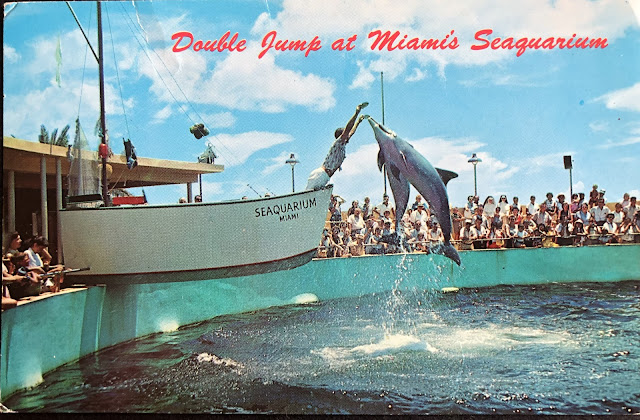Postcards Galore! Part II
Part I followed postcards from 1898 (Private Mailing Card) through the White Border Period of 1915-1930. Next came the Linen Period.
The Linen Period lasted from 1930 to 1950. Not made with linen, these cards were printed on paper with a high rag (cotton textile remnants) content, then finished with a pattern to look like linen. The colors were bright and realistic. Borders became uncommon, but not completely done away with, as ink was again plentiful. Linen postcards often showcased American scenes. Roadside attractions. City buildings. Landmarks. Beaches. If I were to base numbers on my collection I'd say Florida had a monopoly on linen cards! While some linen cards do have white borders, and some white border cards have the bright color printing of linen, they are easily distinguished from one another. The white border postcards are smooth (not shiny like modern cards though), linen has a textured cloth appearance and feel. You can even see the texture in these photos.
Another family story postcard! My aunt (father's younger sister) and her future husband met while they were both students at UC's International House. The building was a gift from John D. Rockefeller, Jr. with the aim of fostering relationships between students from different countries. It worked to foster a relationship between my aunt and uncle; my uncle was an international student from Egypt!
The Photochrom Period began in 1945, although the first photochrom style cards were available in 1939 at Union Oil service stations in the western states. They featured scenic views of the west.
 |
| ©1939 Union Oil Company of Calif. |
Once again, war disrupted the world and postcard production. When WWII was over the Photochrom (German for color photo) was the go-to postcard, colorful and glossy. Resembling photographs, these are the ones we find for sale today. Since we send fewer letters and postcards, relying on emails and e-cards (I'd rather get a real card!), most postcards today are bought as souvenirs.
There is one last period, the Continental Period. This has nothing to do with the printing process, it's the size, and the postcards are still photochrom. In the 1970s the size of U.S. postcards was enlarged from 3.5" x 5.5" to 4" x 6". This size was standard in Europe since the 1920s, hence the name Continental.
 |
| postmark 1971 |
 |
| ©1986 |













I had no idea postcards had such a history. Although, I shouldn't be that surprised. There's always a story there if you dig deep enough.
ReplyDeleteThat's true. Thanks to the Internet it's easier to dig too.
DeleteWhat a fun illustrated history lesson. When I started collecting vintage cards, I was quite overwhelmed and ended collecting all the eras.
ReplyDeleteistarted collecting vintage postcards, I was quite overwhelmed and ended up collecting all the periods!
I probably do that. I just get what looks fun, or mixed lots. Then wonder who to sort them. Era? Subject? Type?
Delete